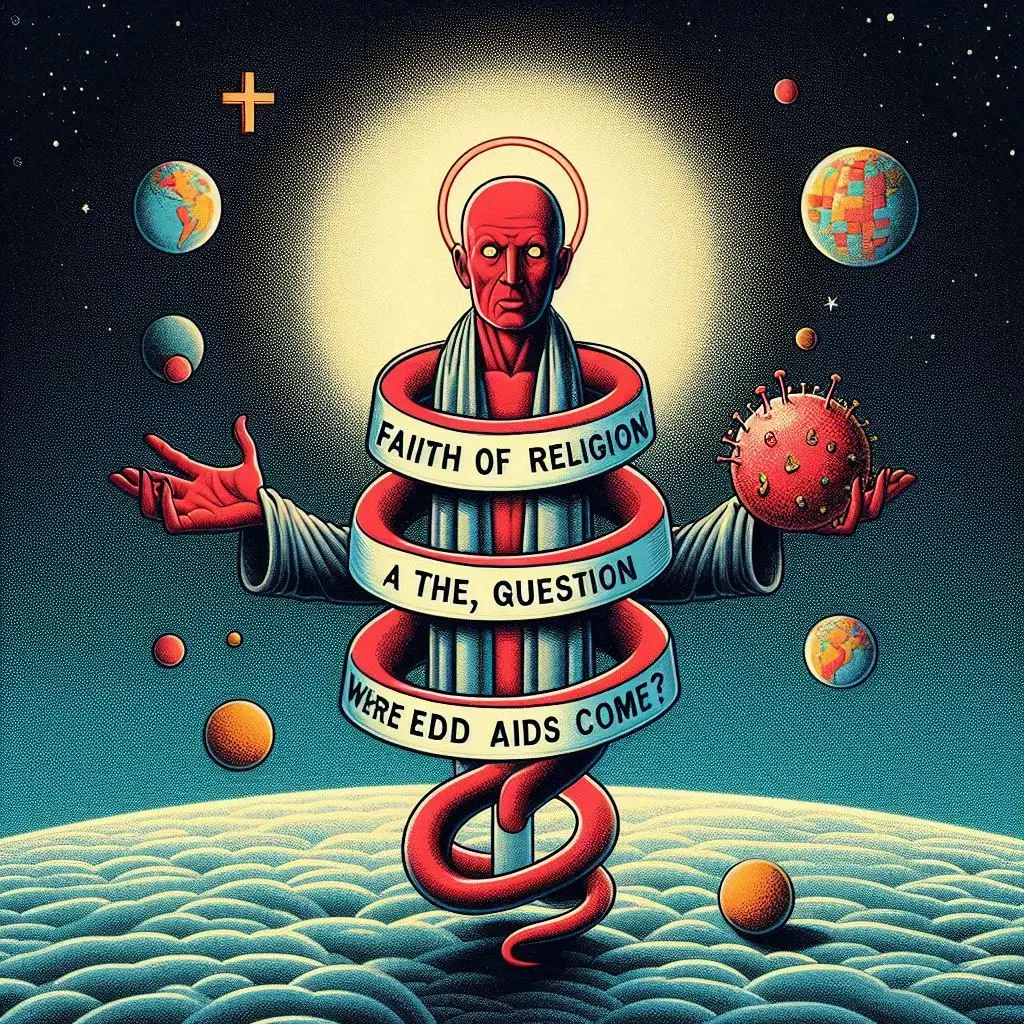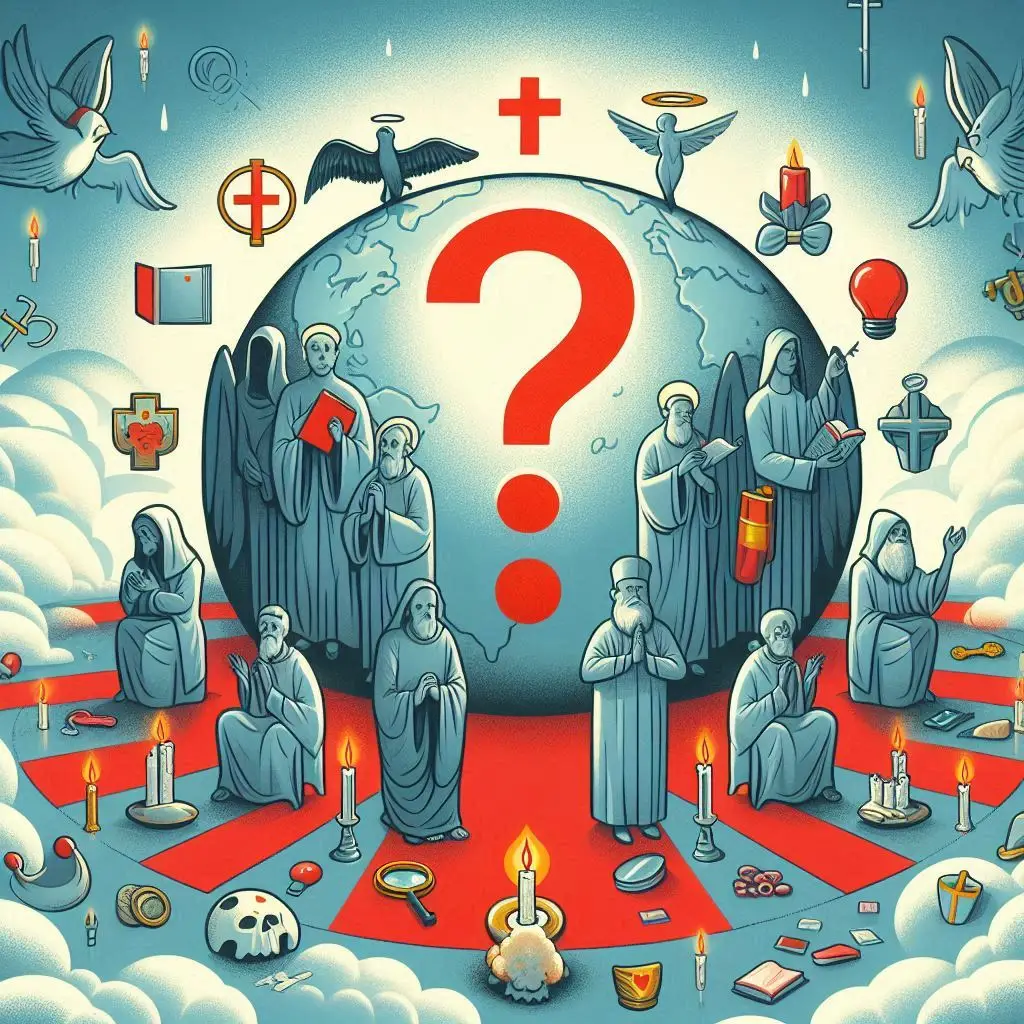When the AIDS epidemic began sweeping across the globe in the 1980s, the virus did not only enter bodies—it also invaded belief systems, challenged traditions, and tested the strength of faith across religious lines. For many, religion served as a source of comfort and care. For others, it became a source of judgment and division. The religious response to AIDS has been anything but uniform—ranging from compassion and healing to condemnation and silence.

And running silently beneath all this spiritual tension was one central, unresolved question that echoed from pulpits to prayer circles: Where did AIDS come from?
The Initial Reaction: Morality Over Medicine
In the early days, when AIDS was largely associated with gay men and intravenous drug users, many religious institutions reacted not with empathy, but with moral scrutiny. Some saw the epidemic not as a health crisis, but as divine punishment—“evidence” of sinful behavior. In churches, mosques, and temples, AIDS was sometimes spoken of in whispers, cloaked in phrases like “God’s wrath” or “consequences of immoral living.”
This reaction wasn’t limited to fringe voices. Mainstream religious leaders in the 1980s, especially within conservative Christian communities in the U.S., often framed AIDS as the result of straying from moral law. Instead of asking where did AIDS come from in a scientific sense, some leaders invoked a spiritual origin—shaping public opinion and delaying the compassionate response many desperately needed.

Silence in Sacred Spaces
In many faith communities, the initial years of the epidemic were marked by painful silence. Congregants suffering from AIDS were often afraid to disclose their status. Shame, fueled by religious messaging, kept people from seeking care or even prayer. In these spaces, the absence of acknowledgment became a form of passive rejection.
This silence wasn’t just theological—it had real-life consequences. Lack of sex education in religious schools, refusal to discuss condoms or safe sex, and an overall avoidance of topics like homosexuality and drug use allowed the virus to spread unchecked. Rather than confronting the question, where did AIDS come from, some institutions simply turned their faces away.
The Turning Point: Compassion Awakens
But the story isn’t just one of condemnation. As the epidemic grew, many religious leaders began to reconsider their stance. Faith-based organizations like The Catholic Church’s Catholic Relief Services, Muslim Aid, and Jewish AIDS services slowly emerged to care for the sick, educate communities, and reduce stigma.
Notably, figures like Reverend Al Sharpton, Archbishop Desmond Tutu, and the Dalai Lama spoke out to promote dignity, human rights, and compassion for those living with HIV/AIDS. They reframed the question where did AIDS come from, not as a punishment from heaven, but as a human crisis demanding spiritual solidarity.
In many areas, mosques and churches became safe havens for those rejected by their families or society. They hosted support groups, distributed medicine, and began integrating AIDS awareness into sermons and outreach programs.
Religion as a Platform for Education
Gradually, faith communities began realizing their powerful influence in shaping attitudes. Religious leaders, once resistant to even uttering the word “condom,” started using their platforms to discuss safe sex, testing, and treatment access.
In Africa, where religion holds deep social authority, imams and pastors were trained to spread HIV awareness, encourage testing, and debunk myths—such as HIV being spread through touch or curses. Campaigns combined religious teachings with public health knowledge to reach millions.
Thus, the spiritual question where did AIDS come from was answered with both faith and fact, with many leaders acknowledging the virus’s biological roots (via SIV, the simian virus in primates) and distancing themselves from earlier notions of divine punishment.
The Ongoing Struggle: Progress Meets Prejudice
Still, tensions remain. In many parts of the world, religious resistance to LGBTQ+ rights continues to fuel stigma against HIV-positive individuals. Debates around sexuality, abstinence-only education, and needle exchange programs still divide faith communities. While some religious groups champion evidence-based education, others resist progress, often in the name of tradition.
The question where did AIDS come from remains central in theological debates—sometimes used to reinforce prejudices, and other times to inspire deeper compassion and commitment to healing.
Healing Beyond Dogma
AIDS forced religion to confront its own values. It tested the limits of dogma, challenged leaders to show mercy, and exposed the dangers of silence. In time, many rose to the occasion—choosing service over judgment, and healing over hate.
Religious spaces that once distanced themselves from the sick are now integral to care, education, and activism. They have become places not just of worship, but of witness—witness to suffering, and to the resilience of the human spirit.
And behind all of this, the question where did AIDS come from has done more than seek a scientific origin—it has asked faith communities to look inward and decide: Will we cast stones? Or will we carry the wounded?
The answer, for many, is still unfolding.


